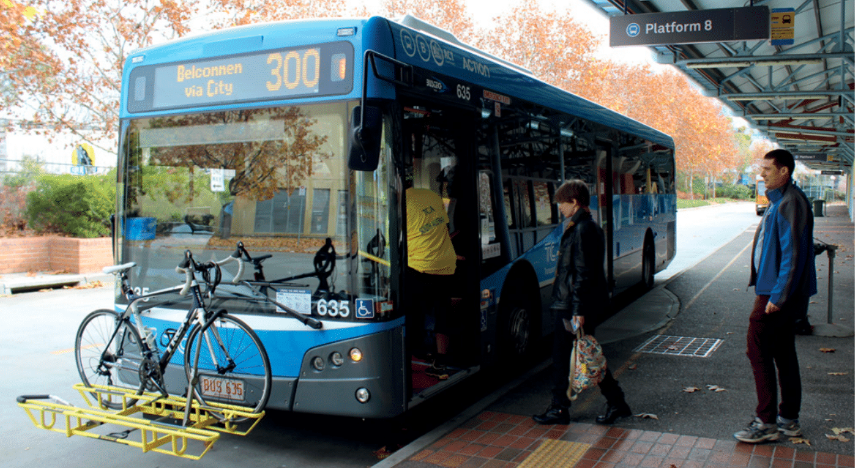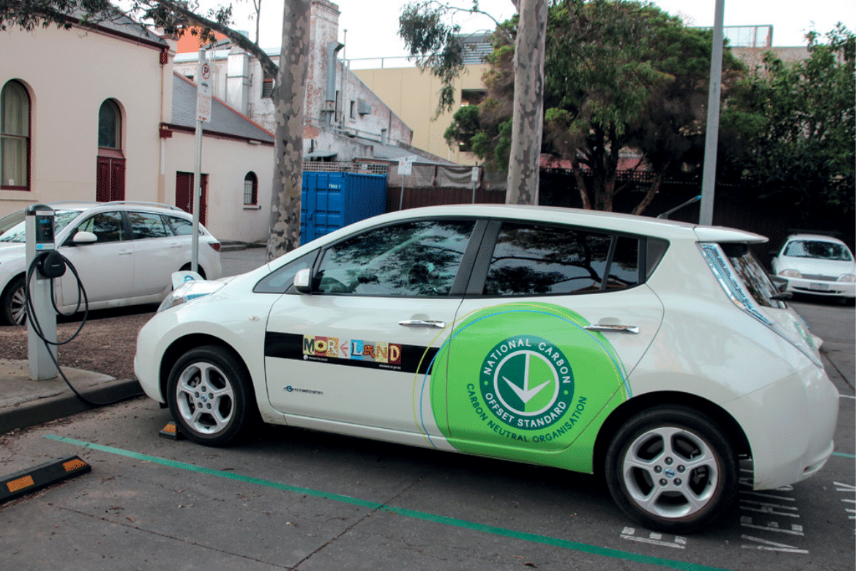The Climate Council recently published a report on transport pollution, Waiting for the Green Light: Transport Solutions to Climate Change.
From the many findings and solutions, one thing is clear: Australia must make changes if it is to keep up with the rest of the world in tackling greenhouse gas pollution caused by transport that is driving worsening climate change.
Did you know…
- The transport sector is Australia’s second highest emitter of greenhouse gas pollution (after electricity)
- In transport emissions, Australia is at the ‘back of the pack’ internationally, behind Russia, Indonesia and Mexico (France, India and Italy are first!)
- Australian cars pollute more than cars from other countries
- Nearly 9 out of 10 Australians travel to work, school or university by car
- Australia is one of a handful of OECD countries without greenhouse gases emissions standards for vehicles, and lacks credible national policy to tackle transport pollution
We need local governments, along with their State and Federal counterparts, to take action.
Local councils can drive down transport pollution and the Cities Power Partnership has created a report full of practical recommendations to mobilise action including:
- introducing vehicle emissions standards
- planning for and investing in infrastructure to enable more people to walk, cycle and use public transport
- powering cars, buses and rail with renewable energy
- increasing the uptake of electric vehicles.
Luckily, there are forward-thinking councils around Australia that are steering their towns and cities away from fossil-fuel driven car culture, and helping to make Australia’s urban areas cleaner, more productive places to live and work.
Zero Emission Vehicle Action Plan: Canberra, ACT
 The ACT Government is on track to achieve 100% renewable electricity by 2020, and has a target to reach net zero emissions before 2050. With transport a key source of greenhouse gas pollution in the ACT, the Government has released an action plan to dramatically reduce greenhouse gas pollution from vehicles as well as encouraging people to walk, cycle and use public transport instead of driving. They are also looking at things like:
The ACT Government is on track to achieve 100% renewable electricity by 2020, and has a target to reach net zero emissions before 2050. With transport a key source of greenhouse gas pollution in the ACT, the Government has released an action plan to dramatically reduce greenhouse gas pollution from vehicles as well as encouraging people to walk, cycle and use public transport instead of driving. They are also looking at things like:
- Investigating hydrogen vehicles
- Trialing battery electric buses
- Transitioning government cars to electric
- Encouraging rollout of public charging infrastructure
Rolling Out Fast-Charging Stations for Electric Vehicles: Sydney’s Eastern Suburbs, NSW
 Three councils in Sydney’s eastern suburbs have committed to providing fast-charging stations throughout the city at central locations. Cities Power Partner Randwick council will be installing four public charging stations for electric vehicles across the city by the end of 2018 as part of its three-council collaboration with neighbouring Waverley and Woollahra councils, with more to come in 2019.
Three councils in Sydney’s eastern suburbs have committed to providing fast-charging stations throughout the city at central locations. Cities Power Partner Randwick council will be installing four public charging stations for electric vehicles across the city by the end of 2018 as part of its three-council collaboration with neighbouring Waverley and Woollahra councils, with more to come in 2019.
Electric Buses Driving New Manufacturing Jobs: Adelaide, SA
 In July 2017, the first Australian designed, engineered and manufactured electric bus rolled off the production line and onto Adelaide’s streets, becoming part of Adelaide’s public transport network. The success of this project has seen the manufacturers Precision Buses contracted to produce 50 more low carbon buses for New South Wales, Queensland and Victoria. This will increase the number of employees at the organisation from 29 to 79.
In July 2017, the first Australian designed, engineered and manufactured electric bus rolled off the production line and onto Adelaide’s streets, becoming part of Adelaide’s public transport network. The success of this project has seen the manufacturers Precision Buses contracted to produce 50 more low carbon buses for New South Wales, Queensland and Victoria. This will increase the number of employees at the organisation from 29 to 79.
Solar Powered Tram Network: Melbourne, VIC
 Victoria’s tram network is one of the largest in the world, with 200 million boardings every year. The entire tram network will soon be powered by 100% renewable energy, with the construction of 138MW of solar capacity by the end of 2018. The Bannerton and Numurkah solar farms in northern Victoria are being built after winning a Victoria government tender in 2017.
Victoria’s tram network is one of the largest in the world, with 200 million boardings every year. The entire tram network will soon be powered by 100% renewable energy, with the construction of 138MW of solar capacity by the end of 2018. The Bannerton and Numurkah solar farms in northern Victoria are being built after winning a Victoria government tender in 2017.
Interested in finding out more? Read the full Waiting for the Green Light: Sustainable Transport Solutions for Local Government report


